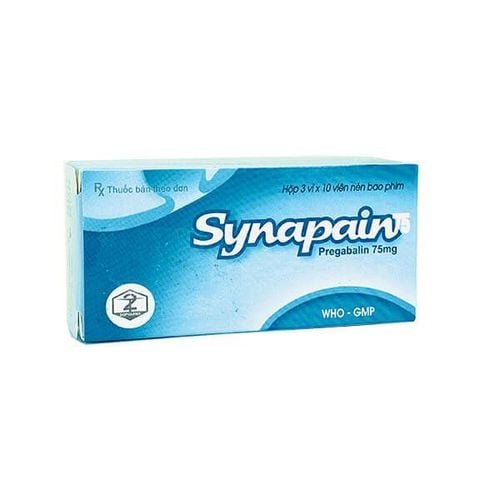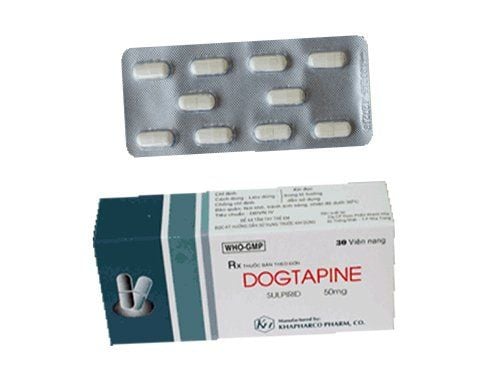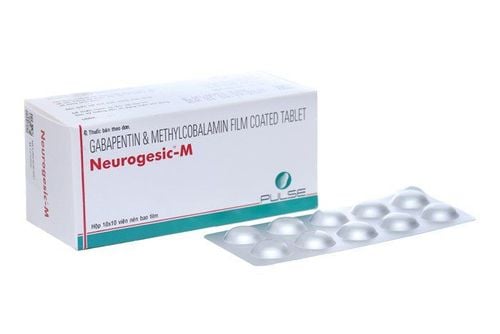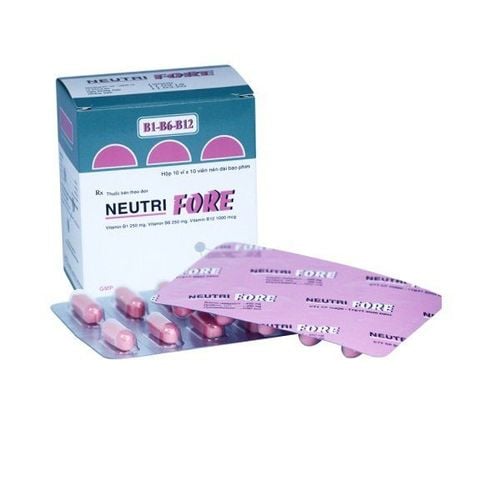This is an automatically translated article.
What is Begaba 300? Begaba 300 is a drug used in the adjuvant treatment of epilepsy. So how is Begaba 300 used to be effective and safe for users? Let's find out more information about the drug in the article below.
1. Indications and contraindications for taking Begaba 300
Begaba 300 has the main ingredient Gabapentin with a content of 300mg and excipients just enough for one tablet. Uses of the drug are as follows:
Begaba 300 is indicated as monotherapy in the treatment of partial seizures with or without secondary generalization in adults and children > 12 years of age. . Safety and efficacy in patients under 12 years of age have not been established. It is indicated as adjunctive treatment in the treatment of partial seizures with or without secondary generalization in adults and children over 3 years of age. Safety and efficacy in patients under 3 years of age have not been established. It is indicated for the treatment of neuropathic pain in adults 18 years of age and older. Safety and efficacy in patients under 18 years of age have not been established. Begaba 300 is contraindicated in patients who are allergic to the active ingredient Gabapentin or any of its ingredients.
2. Dosage and how to use Begaba 300
2.1. Dosage In the treatment of epilepsy, Begaba 300 is used as an adjunct to other antiepileptic drugs. When used alone may not be effective in the treatment of epilepsy for users of the drug.
Dosage in adults and children over 12 years old:
First day: 300mg dose, once a day. Day 2: Use at a dose of 300mg / time, 2 times / day. Day 3: use with a dose of 300mg / time, use 3 times / day. The dose may then be increased in increments of 300 mg daily, based on the patient's effective response to the drug, until an effective therapeutic dose is reached, usually at a dose of 900-1800 mg/day in 3 divided doses, evening no more than 2400mg/day. The total daily dose should be divided equally between each dose and the dosing interval should not exceed 12 hours. In case the patient has to take a high dose, it can be divided into 4 times a day.
2.2. How to use Begaba 300 is made in the form of hard capsules, used orally. Take medicine with boiled water to cool, the time to take the medicine does not depend on the meal, so it can be taken with or without food. Do not chew, break or crush the tablet before taking it.
3.3. What to do in case of overdose Begaba 300? Symptoms of overdose include dizziness, double vision, slurred speech, drowsiness, lethargy, and mild diarrhea. All patients recovered completely after supportive treatment. Decreased absorption of the drug at high doses can limit the absorption of the drug at the time of the overdose and reduce the degree of toxicity due to overdose.
Dialysis and hemodialysis can be used in the treatment of overdose Begaba 300. Especially for patients with severe renal failure, it is important to strictly adhere to the medication prescribed by the doctor regarding the dose and frequency of administration. days to help limit overdose for patients.
4. Side effects of the drug Begaba 300
Because the drug is often used in combination with other antiepileptic drugs, it is not possible to pinpoint which drugs cause side effects. Common side effects such as:
Body as a whole: Asthenia, edema in some locations, mainly the face. Cardiovascular system: Hypertension. Digestive system: Nausea, vomiting, abdominal distension, loss of appetite, gingivitis. Blood and Lymphatic System: Systemic rash, bruising. Musculoskeletal system: Joint pain. Nervous system: Dizziness, increased movement, decreased or lost reflexes, paresthesia, anxiety, feelings of hatred. Respiratory system: Pneumonia. Genitourinary system: Urinary tract infections. When used in children, side effects such as somnolence, increased movement, and feelings of hatred have been reported.
5. Begaba 300 . drug interactions
Co-administration of Begaba 300 with antacids containing aluminum salts and magnesium salts reduces the bioavailability of the active ingredient Gabapentin by about 20%, so this drug should be taken about 2 hours after taking the antacids. Renal excretion of the drug is slightly reduced when used in combination with cimetidine, however, there are no clinical manifestations, so there is no clinical significance.
6. Some notes when using Begaba 300
Patients should not abruptly discontinue anticonvulsants in epileptic patients as this may increase the risk of recurrent seizures. When reducing the dose, stopping the drug or replacing it with other anticonvulsants, it should be done within a minimum of 1 week. In general, Begaba 300 is not effective in the treatment of absence seizures. Patients should be advised not to drive or operate potentially hazardous machinery until it is ascertained that this drug does not affect their ability to engage in these tasks, because of some side effects such as dizziness. face, headache may occur. Use Begaba 300 for pregnant and lactating women only when the potential benefits outweigh the potential risks to the fetus and nursing infant. Caution should be exercised when administering the drug to patients with a history of psychosis, impaired renal function, and hemodialysis. In the course of taking the drug, if the laboratory test can cause false positive results when testing proteinuria. Above is the important information of Begaba 300, carefully reading the instructions before use and strictly following the instructions of the doctor will bring the best treatment results to the patient.
Please dial HOTLINE for more information or register for an appointment HERE. Download MyVinmec app to make appointments faster and to manage your bookings easily.













